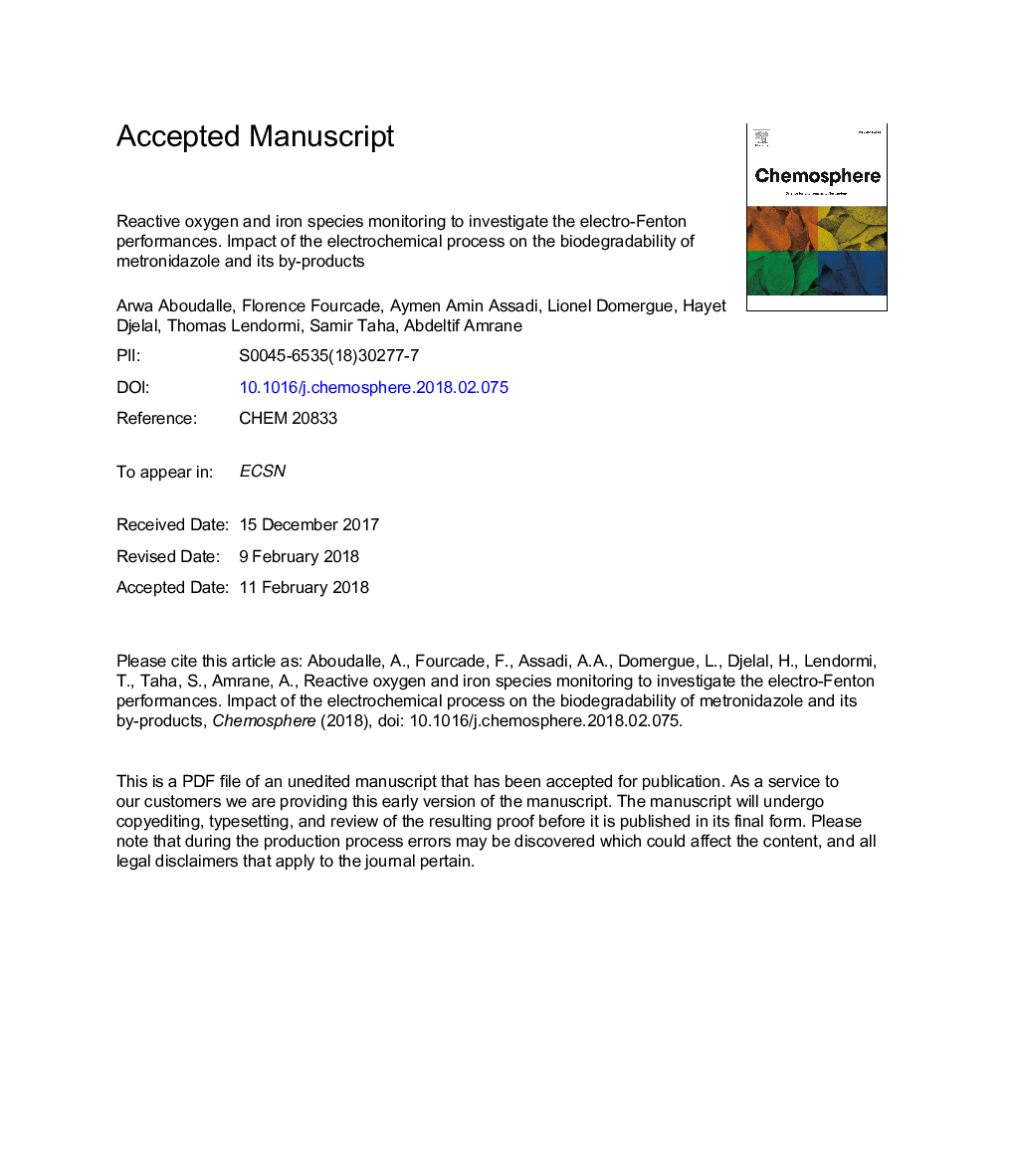| Article ID | Journal | Published Year | Pages | File Type |
|---|---|---|---|---|
| 8851869 | Chemosphere | 2018 | 32 Pages |
Abstract
In this study, the monitoring of reactive oxygen species and the regeneration of the ferrous ions catalyst were performed during electro-Fenton (EF) process to highlight the influence of operating parameters. The removal of metronidazole (MTZ) was implemented in an electrochemical mono-compartment batch reactor under various ranges of current densities, initial MTZ and ferrous ions concentrations, and pH values. It was found that under 0.07â¯mAâ¯cmâ2, 0.1â¯mM of ferrous ions and pHâ¯=â¯3, the efficiency of 100â¯mgâ¯Lâ1 MTZ degradation and mineralization were 100% within 20â¯min and 40% within 135â¯min of electrolysis, respectively. The highest hydrogen peroxide and hydroxyl radical concentrations, 1.4â¯mM and 2.28â¯mM respectively, were obtained at 60â¯min electrolysis at 0.07â¯mAâ¯cmâ2. Improvement of the biodegradability was reached from 60â¯min of electrolysis with a BOD5/COD ratio above 0.4, which was reinforced by a respirometric study, that supports the feasibility of coupling electro-Fenton and biological treatment for the metronidazole removal.
Related Topics
Life Sciences
Environmental Science
Environmental Chemistry
Authors
Arwa Aboudalle, Florence Fourcade, Aymen Amin Assadi, Lionel Domergue, Hayet Djelal, Thomas Lendormi, Samir Taha, Abdeltif Amrane,
